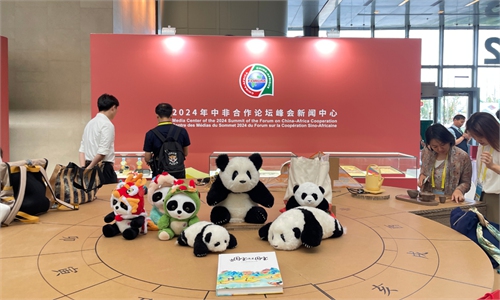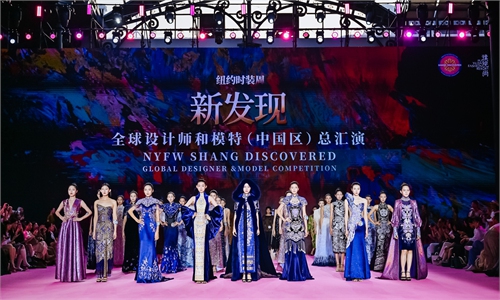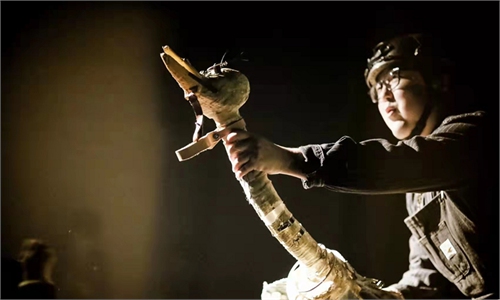ARTS / CULTURE & LEISURE
Rediscovering the Mawangdui Han Tombs: 50 years of unveiling ancient Chinese civilization
Editor's Note:
Fifty years ago, not only the archaeological community but also ordinary people were stunned by the excavation of the Mawangdui Han Tombs. Among the findings is a remarkable discovery known as China's "Sleeping Beauty" (Lady Xin Zhui), an over 2,100-year-old lady who looks nearly as good as she did when she was buried after her death at the age of about 50, during China's Western Han Dynasty (206BC-AD25). The world has marveled at the mystery behind her body, as well as the numerous precious treasures unearthed from the tombs.
In this Mawangdui trilogy, the Global Times Culture Desk reaches out to experts who have been involved in the excavation field work, revisiting those moments when new discoveries were made or more cultural relics were unearthed. This is the second installment.
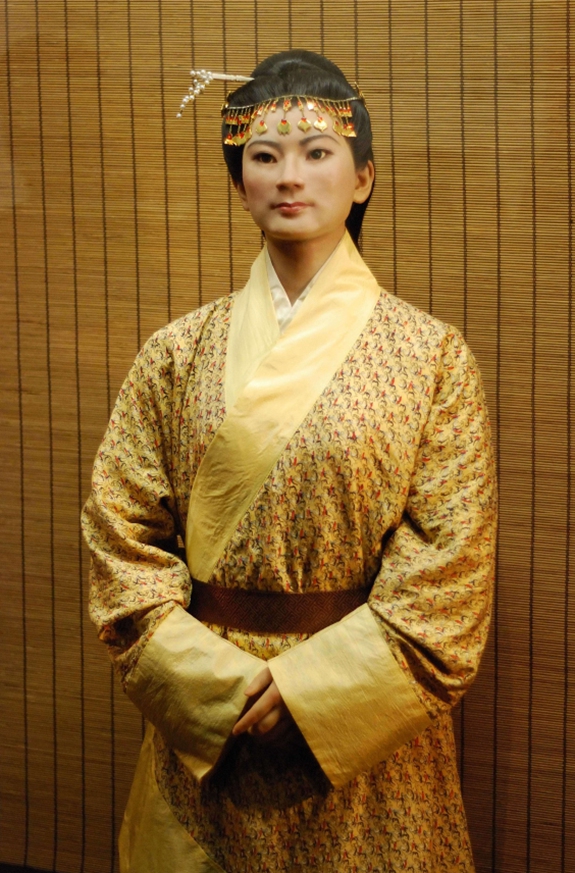
When the archaeology team needed to address the chronological questions, Fu Juyou, one of the leaders of the Mawangdui site excavation, decided to consider stratigraphy as a key factor.
Shan Xianjin, one of the excavators of the Mawangdui Han tombs, was leading the team to implement the idea. He told the Global Times that the team applied stratigraphy into their practice to determine the chronological order of the three tombs.
"By digging with a bulldozer in the middle of the two mounds, a profile was created to study the stratigraphy. We could see different layers of the soil, and decided the order is No.2, No.3 and No.1," recalled Shan, now 88 years old.
However, the mystery surrounding the owner of Tomb No.2 remained unresolved.
"Wrapping up his work at the bottom of the coffin, He Jiejun went ahead to reach to the bottom of the wooden board," Shan said.
"With his swollen fingers, He got something hard. What could it be? He lifted it out, cleaned it a bit with water melt from the snow. It turned out to be a seal!
"The seal read 'Daihou Li Cang' [the marquis Li Cang]. Everyone was so thrilled at that moment! Now we knew the identity of the tomb's owner," Shan noted.
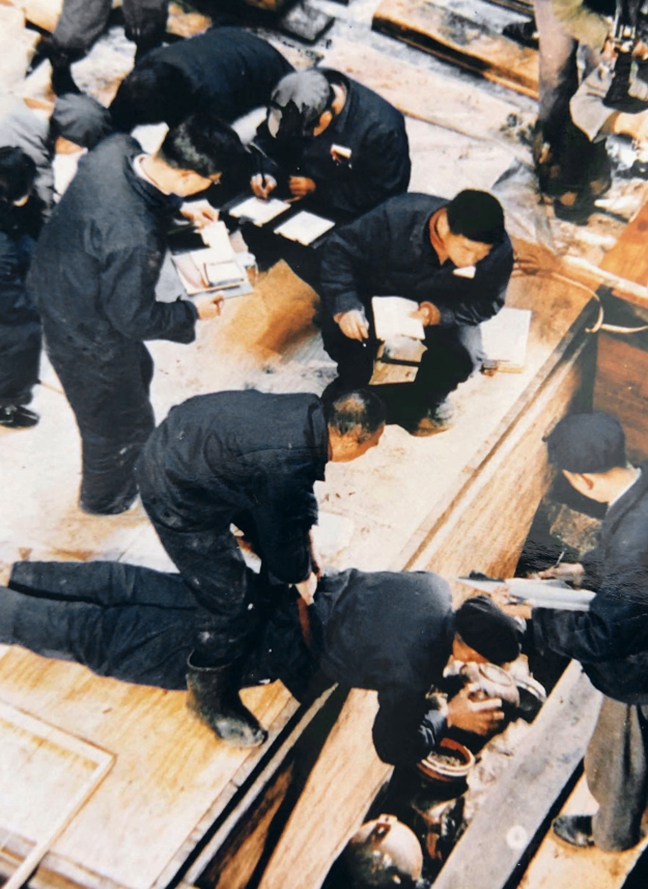
From many discoverers' point of view, the excavation stories of Mawangdui started from the story of "ghost fire." Shan told the Global Times that in December 1971, an air-raid shelter was under construction to be used by a nearby military hospital.
To speed up the process, the construction team utilized iron brazing to drill down, which released an unpleasant odor.
"Two soldiers took a break and smoked, and the marsh gas from the drilling caught on fire, emitting blue flames," Shan recalled.
The flames were believed to be "ghost fire," as the conventional saying goes, leading the team to halt the excavation.
News of the incident was relayed to Hou Liang, then head of the Hunan Museum. Hou immediately identified that the soldiers had likely uncovered an ancient tomb, locally known as a "fire pit tomb," renowned for its well-preserved artifacts.
After the female corpse was unearthed, medical workers performed an autopsy in December 1972 to thoroughly examine the integrity of the body and study ancient Chinese embalming techniques.
Medical experts from across Hunan Province were invited to perform the autopsy, with young surgeon Peng Longxiang leading the procedure.
"It can be said that all clinical departments participated, including radiology, dermatology, stomatology, obstetrics and gynecology, internal medicine, surgery, and otolaryngology. Everyone was joking, but we didn't invite pediatricians because she was an adult, so [almost] all clinical departments participated," Peng said.
Impacts on art, life
Hailed as one of the most important archaeological finds in China during the 20th century, the Mangwangdui site has garnered significant attention both within the country and around the world.
Professor Eugene Wang Yuejin, founding director of the Harvard FAS CAMLab, an art team, told the Global Times in an interview that the discoveries at Mawangdui have had a profound influence on the global understanding of ancient Chinese culture and its contribution to mankind's heritage.
Lü Chenchen, associate director of Harvard FAS CAMLab, told the Global Times that the medical texts discovered at Mawangdui are some of the earliest known manuscripts on traditional Chinese medicine (TCM), providing insights into ancient practices of health, well-being, and holistic healing.
The texts, which cover treatments and medical theories, have left an everlasting impact on TCM and continue to influence people's life in modern times.
Fifty years ago, not only the archaeological community but also ordinary people were stunned by the excavation of the Mawangdui Han Tombs. Among the findings is a remarkable discovery known as China's "Sleeping Beauty" (Lady Xin Zhui), an over 2,100-year-old lady who looks nearly as good as she did when she was buried after her death at the age of about 50, during China's Western Han Dynasty (206BC-AD25). The world has marveled at the mystery behind her body, as well as the numerous precious treasures unearthed from the tombs.
In this Mawangdui trilogy, the Global Times Culture Desk reaches out to experts who have been involved in the excavation field work, revisiting those moments when new discoveries were made or more cultural relics were unearthed. This is the second installment.

A sculpture reconstruction of Lady Xin Zhui Photo: IC
With all three tombs discovered at the Mawangdui Han Tombs, questions about their occupants have become the elephant in the room: Who were they? Which tomb was the earliest, and which was the latest?When the archaeology team needed to address the chronological questions, Fu Juyou, one of the leaders of the Mawangdui site excavation, decided to consider stratigraphy as a key factor.
Shan Xianjin, one of the excavators of the Mawangdui Han tombs, was leading the team to implement the idea. He told the Global Times that the team applied stratigraphy into their practice to determine the chronological order of the three tombs.
"By digging with a bulldozer in the middle of the two mounds, a profile was created to study the stratigraphy. We could see different layers of the soil, and decided the order is No.2, No.3 and No.1," recalled Shan, now 88 years old.
However, the mystery surrounding the owner of Tomb No.2 remained unresolved.
"Wrapping up his work at the bottom of the coffin, He Jiejun went ahead to reach to the bottom of the wooden board," Shan said.
"With his swollen fingers, He got something hard. What could it be? He lifted it out, cleaned it a bit with water melt from the snow. It turned out to be a seal!
"The seal read 'Daihou Li Cang' [the marquis Li Cang]. Everyone was so thrilled at that moment! Now we knew the identity of the tomb's owner," Shan noted.

Archaeologists take out relics from the Mawangdui site in 1972. Photo: Courtesy of CITIC Publishing Group
Details of the discoveryFrom many discoverers' point of view, the excavation stories of Mawangdui started from the story of "ghost fire." Shan told the Global Times that in December 1971, an air-raid shelter was under construction to be used by a nearby military hospital.
To speed up the process, the construction team utilized iron brazing to drill down, which released an unpleasant odor.
"Two soldiers took a break and smoked, and the marsh gas from the drilling caught on fire, emitting blue flames," Shan recalled.
The flames were believed to be "ghost fire," as the conventional saying goes, leading the team to halt the excavation.
News of the incident was relayed to Hou Liang, then head of the Hunan Museum. Hou immediately identified that the soldiers had likely uncovered an ancient tomb, locally known as a "fire pit tomb," renowned for its well-preserved artifacts.
After the female corpse was unearthed, medical workers performed an autopsy in December 1972 to thoroughly examine the integrity of the body and study ancient Chinese embalming techniques.
Medical experts from across Hunan Province were invited to perform the autopsy, with young surgeon Peng Longxiang leading the procedure.
"It can be said that all clinical departments participated, including radiology, dermatology, stomatology, obstetrics and gynecology, internal medicine, surgery, and otolaryngology. Everyone was joking, but we didn't invite pediatricians because she was an adult, so [almost] all clinical departments participated," Peng said.
Impacts on art, life
Hailed as one of the most important archaeological finds in China during the 20th century, the Mangwangdui site has garnered significant attention both within the country and around the world.
Professor Eugene Wang Yuejin, founding director of the Harvard FAS CAMLab, an art team, told the Global Times in an interview that the discoveries at Mawangdui have had a profound influence on the global understanding of ancient Chinese culture and its contribution to mankind's heritage.
Lü Chenchen, associate director of Harvard FAS CAMLab, told the Global Times that the medical texts discovered at Mawangdui are some of the earliest known manuscripts on traditional Chinese medicine (TCM), providing insights into ancient practices of health, well-being, and holistic healing.
The texts, which cover treatments and medical theories, have left an everlasting impact on TCM and continue to influence people's life in modern times.
